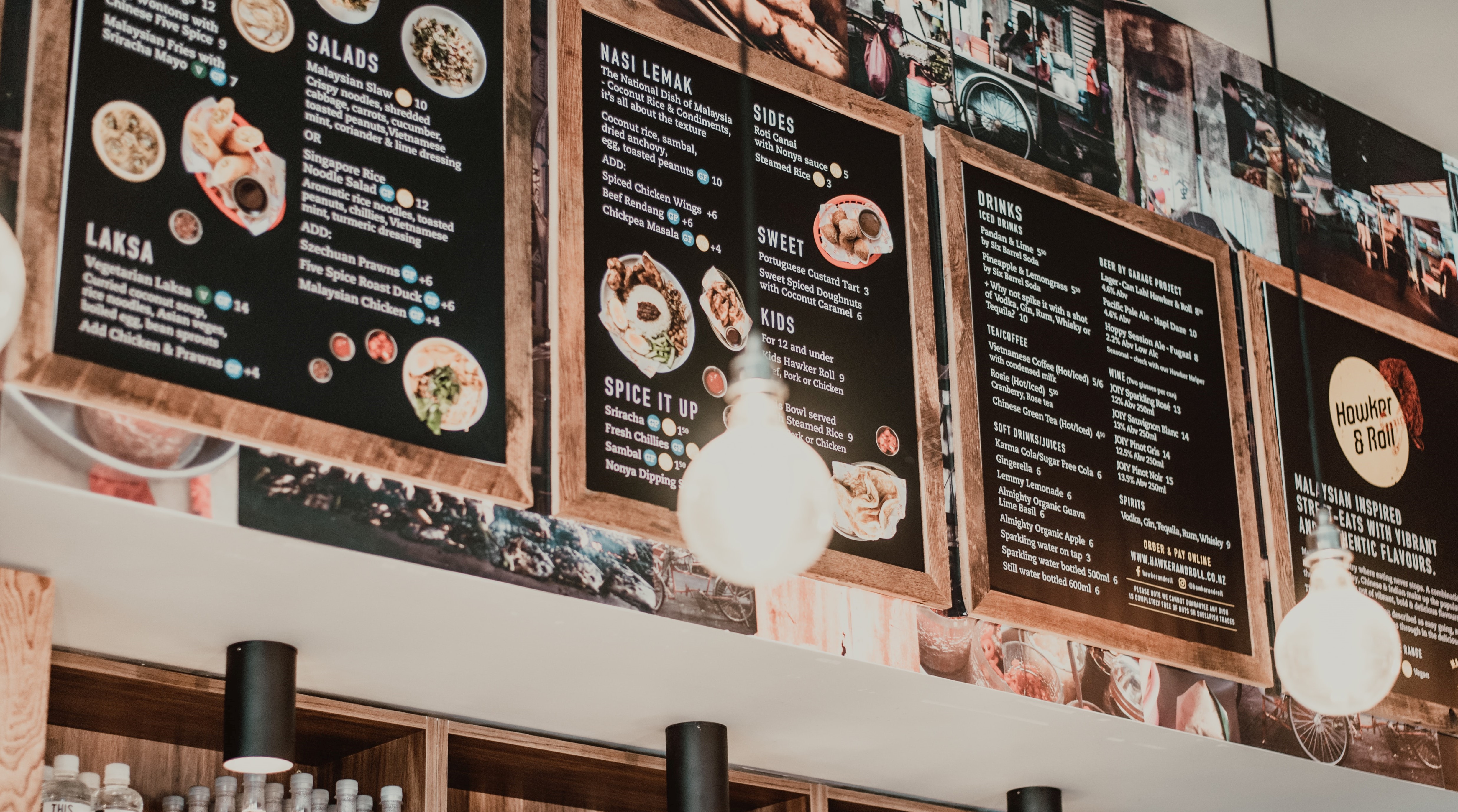Your menu is so much more than a piece of paper that lists your offering. Actually, your menu is a specialized document that not only sells to your customers but also outlines your strategy as a business owner. This extends from menu design all the way through to what you’re selling and why. So take a moment to consider these five important ways to re-think your restaurant’s offering, by way of the menu.
1. Focus on design
Your menu not only does the obvious thing of listing available items, but it also subconsciously impacts on the way your customer orders. The best-designed menu layout automatically pulls your eye to the most expensive item on the menu. For example, if you open up a double page menu, your eye almost always scans in a zig-zag formation – from top right to top left, then down to the bottom right and back across to the bottom left. This differs from a single page menu where the eye lands about a third of the way down from the top of the page. It then scans upwards in order to systematically scroll all the way down again.
With this in mind you might call the top right corner, the “hot property” on the Monopoly board. This is why it is often reserved for pricier dishes or up-sellers like appetizers. One way the designer will draw your eye there is with embellished design details like adding a box or bold lettering. It is important to keep in mind though that this is a delicate art and putting too much emphasis in certain areas actually renders the whole design too cluttered.
2. Be strategic with spacing and wording
The way you describe your dishes should be enticing and flavoursome. By using words like “our famous” or “signature dish” you tempt your patron into ordering it. It is also a little known fact that if you remove the currency sign from the item and only put in a stand-alone number, your customers will spend more. This is because the amount registers differently. Another tip is that diners also prefer menus with bigger fonts and no more than 20% blank space incorporated into the design.
3. Consider pricy decoys
Ever glanced over a menu and noticed a super-fancy, over-the-top priced item? For example the $1000 “Golden Opulence Sundae” from Manhattan’s Serendipity 3 dessert eatery, or Ben & Jerry’s 20-scoop Vermonster. While these are available on their menus, they aren’t necessarily there to be ordered. They are actually decoys to entice you to buy more elsewhere on the menu. The way it works is that seeing the item (and its high price tag) releases dopamine in the body. This gets the blood flowing which then generates excitement around the rest of the menu. Sneaky but effective!
4. Keep it short
New York Magazine recently reported that 28% of restauranteurs are shrinking their menus. Gordan Ramsay also suggests that “less is more” when it comes to selling. This is because too much of a good thing can actually overwhelm your customer. The underlying reason for this, is actually financial. Low-margin dishes don’t keep the lights on. And with less and less staff on the payroll, restaurants are looking to be more efficient, with a more strategic offering that focuses on the ‘bread and butter’ options and does away with all the ‘fat’.
5. Customize items
Now that you have a simpler menu, you can select key items and customize. There is definitely a growing awareness around food conditions including gluten sensitivity and health movements like paleo, low-carb and vegan. A great way to include this customer is to select a few top items on your menu and customize them to cater to this patron too.
The bottom line
Your restaurant’s menu requires careful and considered thought in terms of what you are selling and how your customer is thinking when they come to eat. Once you have a great menu of dishes, it is essential to show them off intentionally. Now your customer can really enjoy your delicious offering, and you can enjoy a healthy bottom line.

